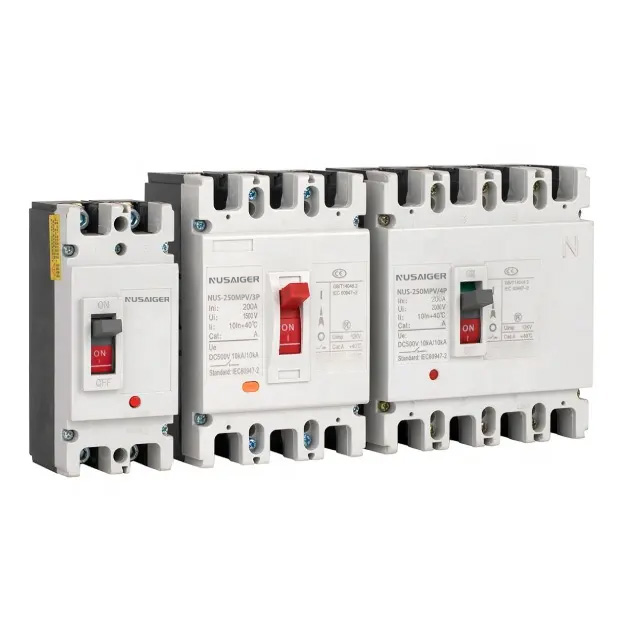Complete Guide to Photovoltaic Circuit Breakers for Solar Systems
Photovoltaic (PV) circuit breakers, also known as DC MCCBs (Molded Case Circuit Breakers), are essential for protecting solar PV systems from overcurrent, short circuits, and electrical faults.
With the rapid growth of solar installations, understanding PV circuit breakers’ functions, types, selection criteria, installation practices, and maintenance is critical for system safety and reliability.
1. What is a Photovoltaic Circuit Breaker?
A PV circuit breaker is a DC-rated protective device designed to interrupt current flow in solar circuits during overcurrent or fault conditions. Unlike standard AC breakers, PV breakers handle DC current with higher voltages and continuous current.
2. Importance in Solar PV Systems
- Protect inverters, combiner boxes, and panels from short circuits
- Ensure safety for maintenance personnel during repairs
- Prevent fire hazards and equipment damage
- Meet safety regulations and standards for PV installations
3. Types of Photovoltaic Circuit Breakers
- DC Molded Case Circuit Breakers (DC MCCB): High-current, high-voltage rated for large PV arrays.
- DC Miniature Circuit Breakers (DC MCB): Lower-rated breakers for smaller solar systems or branch circuits.
- Hybrid or Multi-function Breakers: Combine overcurrent, surge, and isolation functions for compact installations.
4. Key Specifications
- Rated Voltage (Vdc) – match the PV system’s maximum DC voltage
- Rated Current (Idc) – handle continuous current from PV strings
- Breaking Capacity – ensure it can interrupt maximum short-circuit current
- Type of Trip – thermal-magnetic or electronic trip mechanisms
- Environmental Ratings – temperature, humidity, UV exposure, dust, and corrosion resistance
5. Selecting the Right PV Circuit Breaker
- Determine total PV array current and voltage
- Choose breaker rated slightly higher than nominal current but below inverter limits
- Check manufacturer certifications (IEC 60947-2, UL 489)
- Consider environmental conditions and mounting type
6. Installation Best Practices
- Install close to PV strings or combiner boxes
- Use proper DC-rated cables and connectors
- Ensure breaker orientation and ventilation meet manufacturer guidelines
- Label breakers for easy identification
- Separate DC and AC breakers to prevent cross faults
7. Maintenance and Inspection
- Visual inspection for discoloration or overheating
- Test trip functionality periodically
- Clean terminals and check torque regularly
- Replace breakers after major faults or trips beyond rated cycles
- Maintain records of installation and maintenance
8. Common Issues and Troubleshooting
- Breaker frequently tripping – check overcurrent or inverter settings
- Loose terminals – secure torque and check cable size
- Corrosion in outdoor installations – use weatherproof enclosures
- Incorrect voltage rating – replace with suitable DC-rated breaker
9. Case Study: Utility-Scale Solar Farm
A 10MW solar farm in Germany faced repeated DC combiner box failures. By installing DC MCCBs rated for 1.5x string current, the farm achieved:
- Zero combiner box failures in 12 months
- Enhanced safety for maintenance teams
- Reduced downtime and improved energy yield
10. Emerging Trends
- Smart DC breakers with remote monitoring
- Compact modular breakers for rooftop solar
- Higher voltage-rated breakers for next-generation PV systems
- Integration with surge protective devices for full system protection
Conclusion
Photovoltaic circuit breakers are a cornerstone of safe, reliable solar systems. Selecting the right breaker, following proper installation, and performing regular maintenance ensure longevity, safety, and compliance with international standards.



